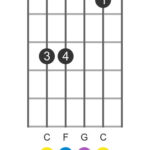Playing fingerstyle on a steel string acoustic guitar presents unique challenges, particularly the tendency for fingers to slip off the strings. This can be frustrating, especially when trying to execute intricate pieces or maintain a consistent tone. However, with the right techniques and adjustments, you can overcome this issue and enjoy the rich sound and versatility of fingerpicking on steel strings. This guide explores practical solutions to enhance your fingerpicking experience on a steel string acoustic guitar.
Understanding the Challenge of Finger Slippage on Steel Strings
Steel strings, while prized for their bright and resonant tone, can feel slicker under the fingers compared to nylon strings used on classical guitars. This inherent slipperiness, combined with the tension of steel strings, can make it difficult to achieve a solid grip and clean release during fingerpicking. For players transitioning from nylon strings or those new to fingerstyle, this can be a significant hurdle. The key is to adapt your technique and explore equipment adjustments that provide better control and prevent finger slippage.
Solutions for Enhanced Fingerpicking Grip
Several approaches can help you gain better control and prevent your fingers from slipping when fingerpicking a steel string acoustic guitar. These solutions range from equipment choices to technique modifications.
Silk and Steel Strings: A Gentler Approach
One effective option is to switch to “silk and steel” strings. These strings are designed specifically for fingerpicking and offer a softer, more tactile playing experience. Silk and steel strings incorporate a silk or nylon core within the string winding, resulting in reduced tension and a smoother surface. This combination makes them significantly easier on the fingertips and less prone to causing slippage. Despite their gentler feel, silk and steel strings still deliver a bright and pleasing acoustic tone, making them an excellent choice for fingerstyle players seeking comfort and control without sacrificing sound quality.
The Nail Advantage: Growing and Using Fingernails
Another technique to enhance grip and attack is to utilize fingernails on your picking hand. Growing your fingernails, even slightly, can provide a more substantial point of contact with the strings, reducing slippage and producing a clearer, more articulate tone. When using nails, it’s crucial to maintain them at a moderate length, extending just a few millimeters beyond the fingertip. Excessively long nails can be brittle and prone to breakage, and can also produce an overly bright and sometimes harsh sound.
Even when employing nails, remember to incorporate the fleshy part of your fingertip in your picking technique. Relying solely on the fingernail can lead to a thin, weak tone and rapid nail wear. The ideal approach is a combination of nail and flesh, achieving a balance of warmth and articulation.
Combining Silk and Steel Strings with Nail Technique
For some players, the ultimate solution lies in combining both silk and steel strings and a fingernail technique. This synergy can provide the comfort and reduced slippage of silk and steel strings, enhanced by the precision and attack offered by carefully shaped fingernails. Experimenting with this combination can be particularly beneficial for intricate fingerstyle pieces that demand both speed and accuracy.
Advanced Fingerpicking Techniques for Steel Strings
Beyond equipment adjustments, refining your fingerpicking technique is paramount to preventing slippage and achieving fluidity. Two key techniques are particularly helpful:
Planting Your Right Hand Fingers
“Planting” is a technique where you rest a group of right-hand fingers on the strings simultaneously before initiating a pluck. This provides a point of stability and reference for your picking hand. As you pluck a string with one finger, the other planted fingers remain in contact, preventing unwanted movement and slippage. This technique is especially useful for arpeggiated passages or sequences of notes played in a forward motion (towards the floor). While planting is less applicable for backward movements (towards the ceiling), it forms a solid foundation for controlled and accurate fingerpicking.
The “Handing Off” Technique
The “handing off” technique is a crucial habit for all fingerstyle guitarists, and particularly beneficial for preventing slippage on steel strings. It involves immediately placing the next finger you intend to use onto its target string the instant you pluck a note. This “hand-off” occurs even if the left hand isn’t yet ready for the next chord or note. By proactively positioning your fingers, you maintain constant contact and control over the strings, minimizing the chance of slippage and promoting smooth transitions between notes. This technique fosters accuracy, efficiency, and a more secure feel when fingerpicking.
Conclusion
Overcoming finger slippage on a steel string acoustic guitar is achievable through a combination of informed equipment choices and refined technique. Experimenting with silk and steel strings, developing a fingernail technique, and diligently practicing planting and handing off techniques will significantly improve your fingerpicking experience. Consistent practice and attention to these details will empower you to play fingerstyle on your steel string acoustic with confidence, control, and a beautiful, resonant tone.


